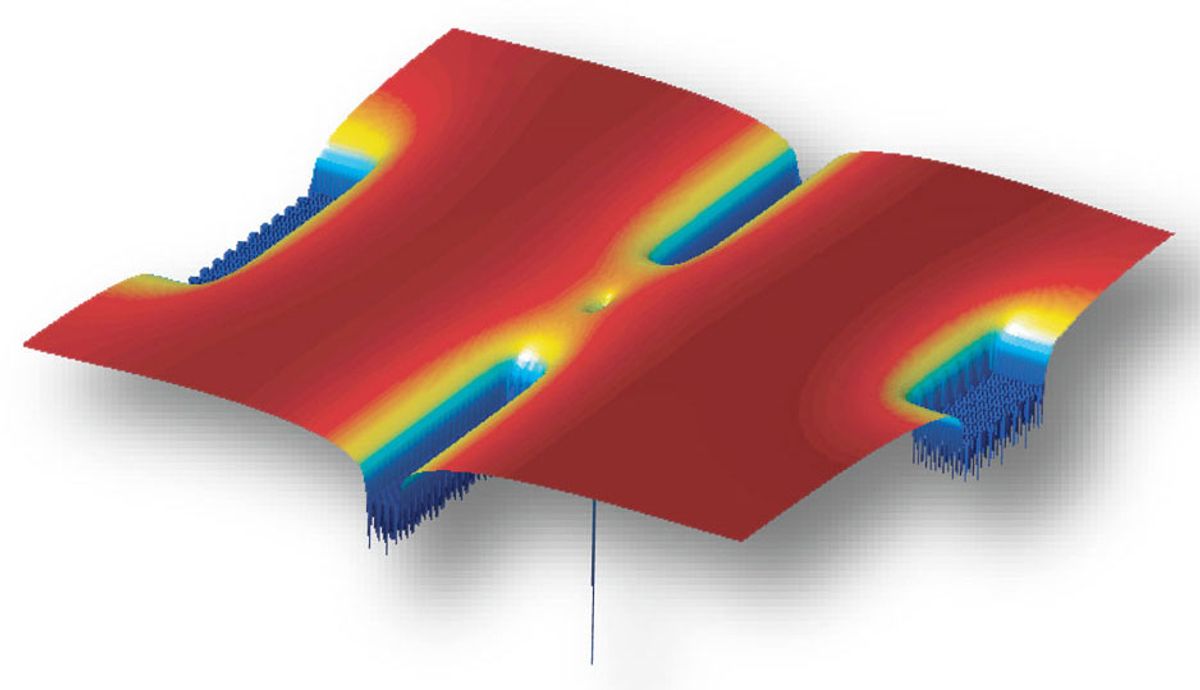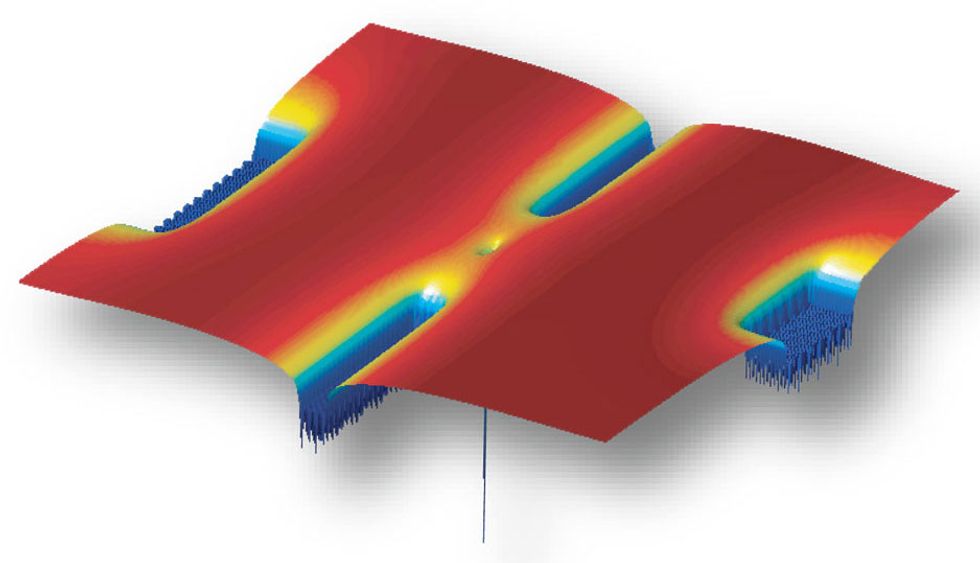27 February 2012—Researchers have created a working transistor out of a single phosphorus atom and in the process have shown that Moore’s Law, the cornerstone of the semiconductor industry, might hold true much longer than anyone expected.
To make their tiny transistor, the group, which was led by Michelle Simmons, a researcher at the University of New South Wales, in Australia, bathed silicon in phosphine gas. They then used a scanning tunneling microscope (STM) and a technique common in lithography to replace one silicon atom in a six-atom lattice with a phosphorus atom. “Controlling a chemical reaction so that just one phosphorus atom was introduced into the device was challenging,” says Simmons.
When the team—which also included researchers from the Korea Institute of Science and Technology Information, Purdue University, and the universities of Sydney and Melbourne—applied a voltage across the phosphorus atom, it behaved like a transistor, switching and amplifying an electrical current.
The researchers took great pains to assure themselves that the effects they observed were not the product of multiple atoms. “The great thing is that [the atom's appearance] under the scanning probe microscope and its electronic fingerprint agree well with both theoretical predictions and earlier optical measurements of a single phosphorus atom in silicon,” says Simmons. (In a related discovery, last month Simmons and her colleagues from Purdue and the University of Melbourne showed that Ohm’s Law, which is fundamental to circuit theory and chip design, works at the atomic level.)
Experts who did not take part in the research were impressed by the work but said that it would be a while before there would be any practical applications in conventional electronics.
One important question is whether Simmons’s painstaking STM technique, which makes transistors one at a time, can ever be refined to yield the millions or billions of transistors that are integrated onto a single piece of silicon in today’s chips. “Can the precise atomic spacing be maintained over large areas, and can the manufacturing costs and times be brought into the reasonable realm?” wonders Dick Slusher, director of the Georgia Tech Quantum Institute.
Ioannis Kymissis, head of the Columbia Laboratory for Unconventional Electronics, says that more modeling of the device is necessary to ensure that “the electrodes are [not so small that] their quantum effects start to mix” with those of the phosphorus atom. What’s more, the experts point out, the single-atom phosphorus transistor switches only at cryogenic temperatures, making it impractical for real-life applications unless the operating temperature is raised.
The original motivation for the work had been to build solid-state silicon quantum computers, Simmons says. In 1998, University of Maryland physicist Bruce Kane hypothesized that one way to build a solid-state quantum computer would be to use the nuclear spins of phosphorus atoms embedded in silicon. Simmons and her collaborators were inspired by that idea—although their single-atom transistor is based on the electron rather than the nuclear spins of phosphorus atoms.
Kane calls the single-atom transistor “an experimental and engineering tour de force” and says he is optimistic that more progress will be made soon. “I expect that they will be able to demonstrate some sort of quantum logic device using their technology in the next few years,” he says.
About the Author
Saswato R. Das, a New York City–based writer, contributes frequently to IEEE Spectrum. In January 2012 he reported on a 4-atom-wide nanowire that obeys Ohm’s Law.

